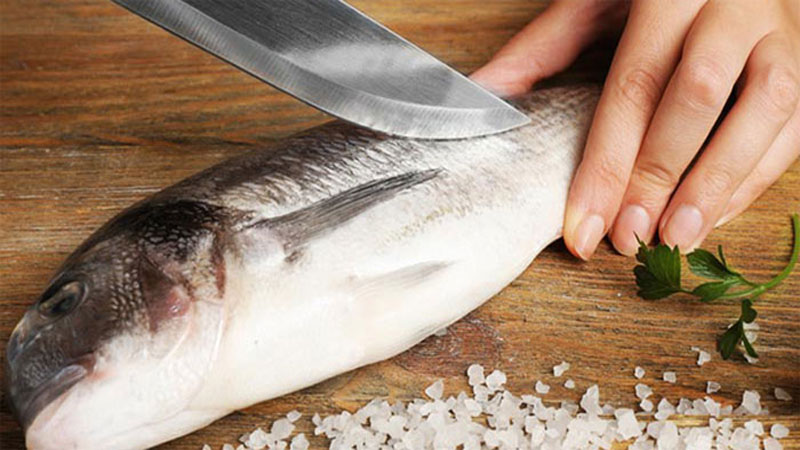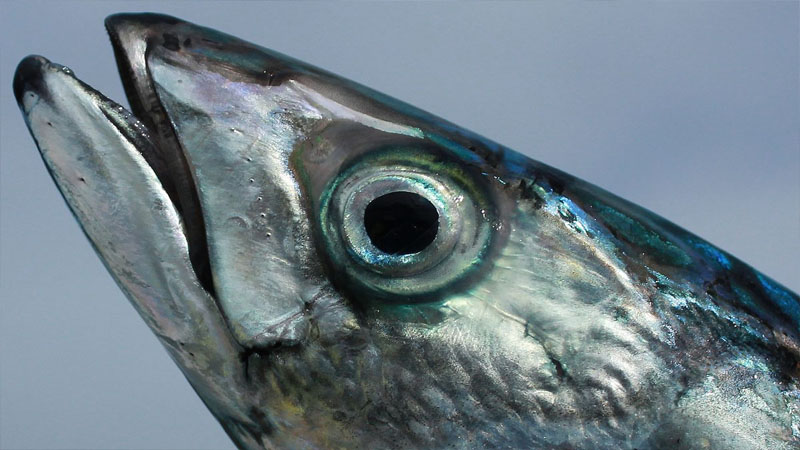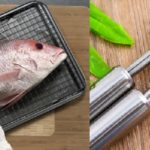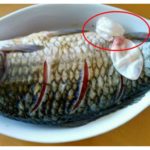Fish is an incredibly nutritious food, packed with health benefits. However, it’s important to know which parts to avoid and how to clean it properly. We will highlight 5 parts of the fish that you should remove or clean before cooking to ensure your family’s well-being.
1 Fish Scales
 Fish Scales
Fish Scales
Scaly Fish
Fish scales are an external protective layer, shielding the fish from scratches and damage. They are closely attached to the fish’s skin and provide some nutritional value, containing and . However, due to the presence of harmful bacteria and dirt that accumulates on the scales while the fish swims in the water, they need to be removed.
Slimy Fish – No Scales
For slimy fish that lack scales, bacteria and dirt are still present, even if they are not visible to the naked eye. These fish have a thick layer of mucus covering their bodies, which can cause a strong fishy odor if not cleaned properly.
To remove the mucus, you can use the following methods:
-
Use ash or husk to rub and clean the fish’s body, then rinse with clean water or rice water.
-
Lemon or vinegar can also be used to scrub the fish’s body, followed by a rinse with clean water.
-
Apply lime or salt to the fish, especially for Pangasius, place them in a net bag and shake vigorously to remove the mucus, then rinse with lemon or vinegar.
Reference:
2 Fish Head
Fish heads are rich in fat and contain high levels of , fatty acids , which offer numerous health benefits. They help boost your health, provide antioxidants, and enhance brain, heart, and eye nutrition. However, fish heads also contain the highest concentration of mercury, a harmful toxin that can lead to liver and kidney damage and a reduction in IQ.
 Fish Head
Fish Head
Therefore, for wild-caught fish, where the water environment cannot be controlled, it is best to discard the head before cooking.
On the other hand, farmed fish raised in controlled environments with regulated levels of heavy metals in the water can be safely used to prepare delicious dishes.
Additionally, remember to remove the gills as they are a hotspot for harmful bacteria and toxins accumulated through the fish’s respiratory process.
3 Fish Eyes
It is not advisable to consume the cornea of the fish as it may contain blood streaks or white spots caused by harmful bacteria. It also contains a toxin called Cyprinol sulfate, a bile acid C27, which is not good for health.
 Fish Brain
Fish Brain
5 Fish Internal Organs
It is recommended to discard the intestines and heart of the fish as they may contain parasites, dirt, harmful bacteria, and alcohol, which can cause kidney damage and parasite infections.
The black membrane inside the belly should also be scraped off as it is a layer of mud and dirt accumulated during the fish’s growth, which is not suitable for consumption.
Additionally, avoid consuming the fish bile as it contains high levels of toxins, despite also having beneficial enzymes and men. Eating it can cause poisoning, leading to vomiting, diarrhea, and potential brain damage.
 Fish Internal Organs
Fish Internal Organs
The liver and roe are the only internal organs suitable for cooking.
-
Fish liver is rich in , providing better quality than that of land animals, and free from harmful toxins.
-
Fish roe is an excellent source of omega-3, particularly beneficial for women’s health.
The fish air bladder, a bag of air, should be retained and cooked as it is a source of sticky protein, various sugars, trace elements, , , , etc. It is considered a cure for various ailments such as di tinh, hoạt tinh, thổ huyết, khái huyết, uốn ván, kinh giật, băng huyết, hemorrhoids, and dysentery.
In conclusion, understanding these 5 parts of the fish will help you utilize it as a wholesome food, providing nourishment to your family and yourself. Avoid consuming the harmful parts to prevent health risks and enjoy your delicious and healthy fish meals.
- The Head: The eyes and brain of the fish can contain high levels of toxins and should be removed entirely.
- Intestines: The intestines are home to bacteria and parasites, so they need to be removed and discarded.
- Liver: The liver stores toxins and heavy metals, so it’s important to cut it out and dispose of it separately.
- Kidneys: These organs also filter waste and toxins, so they should be carefully removed.
- Skin and Scales: Although not as toxic as the previous parts, the skin and scales can harbor bacteria and should be cleaned thoroughly or removed if preferred.






































